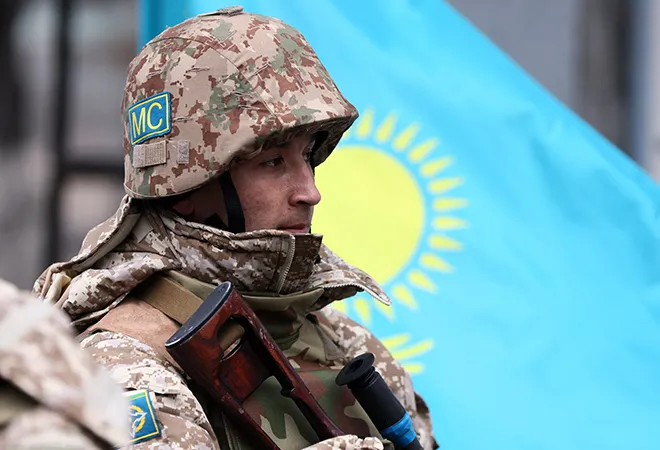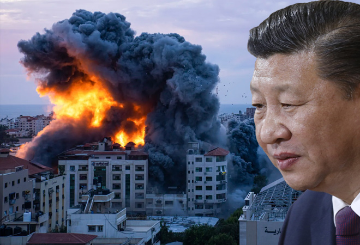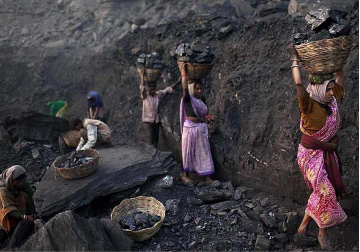
The
protests in Kazakhstan at the beginning of January 2022 became the most tragic page in the history of the Central Asian republic since its independence in 1991. In response to the increase in the LPG prices for cars, people took to the streets to protest in the western part of the republic, which then spread to many other cities. The most tragic events took place in Almaty, the largest city in the republic and the former capital, where protesters took full control of the city for several days, seizing the airport, banks, administrative buildings and looting shops. Under such conditions where even the Kazakh law enforcement agencies couldn’t restore order, the President of Kazakhstan,
Kassym-Jomart Tokayev, requested the assistance of fellow members of the Collective Security Treaty Organisation (CSTO), which sent its troops to the republic. As a result, the situation was quickly stabilised, but the consequences of the crisis will affect regional security for a long time.
Kazakhstan seems to be doing great, but in reality, the situation is somewhat different, especially in the certain regions of the republic.
Economically speaking, Kazakhstan seems to be an emerging leader in the region by many indicators. For example, according to the ratings of investment attractiveness in the post-Soviet space, excluding Russia, it is the undisputed leader. Kazakhstan is the world leader in uranium mining, with a share of 40 percent. Last year, its oil production amounted to about 86 million tons. Moreover, the growth prospects are real, because the biggest oil field in the Caspian Sea—Kashagan—has not yet reached full capacity. Kazakhstan is one of the leading producers of copper, zinc, and other metals. Apart from this, agriculture has also developed in recent times. Statistically, Kazakhstan seems to be doing great, but in reality, the situation is somewhat different, especially in the certain regions of the republic.
Meanwhile, there is a whole range of problems and imbalances existent in the Central Asian country. First of all, it should be noted that there is a significant gap in the distribution of income between regions and different social strata. Why, for example, is the situation unstable in Aktau—the capital of the Mangystau region—and other neighboring districts? It is not the first time that protests have taken place there. Exactly 10 years ago,
the labour conflict in Zhanaozen led to serious protests and clashes with the police, which led to civilian casualties. Similarly, in 2016, there were land protests that were anti-Chinese in sentiment. This was primarily because the government adopted a
new Land Code in Kazakhstan, which provided for the possibility of leasing the land long-term, including by foreign investors. This caused protests amongst the population, as people were afraid that China might take over Kazakhstan's land under a long-term lease.
This was primarily because the government adopted a new Land Code in Kazakhstan, which provided for the possibility of leasing the land long-term, including by foreign investors.
Another socio-economic reason for the recent events is because of the demographic boom. Kazakhstan has been facing rapid population growth, especially in rural areas in the south of the republic. The state is not able to provide them with quality education, health care, and employment. As a result, many of them moved to Almaty. As it happens, it was this community of migrated people that started the protest.
In addition to the socio-economic prerequisites of the protest, an important factor was the struggle for power between influential groups in Kazakhstan. What is important to note is that during the time of the crisis, the republic operated under a dual-power system. The current President, Kassym-Jomart Tokavev, was not the only leader of the country; the first President of the republic, Nursultan Nazarbayev, retained his influence in Kazakhstan. In the last few months, there has been an increase in the struggle for influence between the two factions. In parallel with the dramatic events in Almaty on 5 January, no less important changes took place in the capital Nur-Sultan. The current President Tokayev
dismissed Nazarbayev's henchmen and appointed his supporters in their place. First, the President dismissed the heavyweight
Prime Minister Askar Mamin, putting in his place a close aid Deputy Prime Minister Alikhan Smailov, then he dismissed the leadership of the National Security Committee, including Nazarbayev's nephew, First Deputy Samat Abish. By the evening, Tokayev appointed himself the Head of the Security Council of the republic, the last position held by the first president Nursultan Nazarbayev. Thus, it can be concluded that, at least, Tokayev and his team took advantage of a difficult situation to seize all the levers of power and influence inside Kazakhstan.
The President dismissed the heavyweight Prime Minister Askar Mamin, putting in his place a close aid Deputy Prime Minister Alikhan Smailov, then he dismissed the leadership of the National Security Committee, including Nazarbayev's nephew, First Deputy Samat Abish.
Nevertheless, it was not possible to stabilise the situation in the country by reshuffling of power in the capital. The most difficult situation was observed in Almaty; the city was completely in the hands of protesters and looters. The law enforcement agencies of the republic demonstrated impotence in the fight against the protesters. In such circumstances, on 7 January,
President Tokayev decided to request the assistance of CSTO partners. The basis for the request was a terrorist threat to the security of Kazakhstan. The very next day, the first troops of military arrived in the republic to protect strategic facilities. In total, 2,500 military personnel from Russia, Belarus, Tajikistan, Kyrgyzstan, and Armenia arrived in Kazakhstan. The connection of the CSTO has dramatically affected the course of stabilisation of the situation in the republic. The law enforcement agencies of Kazakhstan regained control of Almaty in a matter of hours and began searching for the participants of the pogroms.
The initial statements of the authorities about the 20,000 terrorists thrown into Kazakhstan to carry out attacks do not stand up to scrutiny, although it is impossible not to note the good coordination and organisation of the main groups of protesters who were able to systematically capture the most important public building.
What awaits Kazakhstan in the future?
The main task of the current authorities is to restore order as soon as possible, arrest all those involved in protests and pogroms, as well as conduct a thorough investigation of what happened, culminating in the punishment of all those involved. Only this will prevent the recurrence of such events in the future.
Personally, Tokayev also faces the task of strengthening his personal power and gradually reducing Nazarbayev's influence. Therefore, we can predict the continuation of the attack on his clan, which includes his daughter, Dariga Nazarbayeva, a Member of Parliament; and Timur Kulibayev, the middle son-in-law, the richest businessman in the republic; the head of the Chamber of Entrepreneurs “Atameken”; nephews of the first Deputy Head of the KNB Samat Abish and businessman Kairat Satybaldy, as well as a number of large businessmen such as Patokh Shodiev, one of the co-owners of the Eurasian Group.
Kazakhstan, a leading economy in the post-Soviet space, one of the most stable states with a multi-vector foreign policy, failed to cope with the internal crisis and was forced to request external assistance to restore order.
Analysing the results of the incident, it can be stated that the main losses for the republic are reputational and political. Kazakhstan, a leading economy in the post-Soviet space, one of the most stable states with a multi-vector foreign policy, failed to cope with the internal crisis and was forced to request external assistance to restore order. Although there are some losses in the economy, they are not fatal. According to preliminary official data, the damage caused by riots in Kazakhstan in early 2022 is estimated at US $200 million. At the same time, at the macroeconomic level, the losses are still symbolic. Thus, all the largest enterprises which are the main contributors to the GDP of the republic continued their activities in the same mode. This, in turn, means that the export of raw materials and low-grade goods will remain at approximately the same level as before the crisis, and will continue to export a significant part of the goods abroad.
For the CSTO, the situation in Kazakhstan was an important test of the ability of the participating countries to respond quickly to any crisis. In a short time, it was decided to send a peacekeeping contingent. As a result, a quick operation to transfer troops and complete the set tasks allowed to reverse the situation in the confrontation with the protesters. On
11 January, President Tokayev announced the beginning of the withdrawal of the peacekeeping contingent, which should be completed in 10 days.
The views expressed above belong to the author(s). ORF research and analyses now available on Telegram! Click here to access our curated content — blogs, longforms and interviews.



 The
The  PREV
PREV


